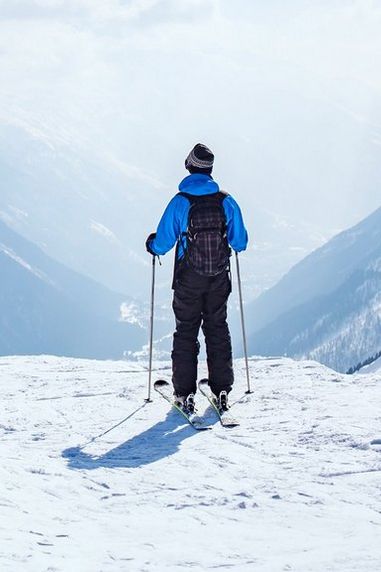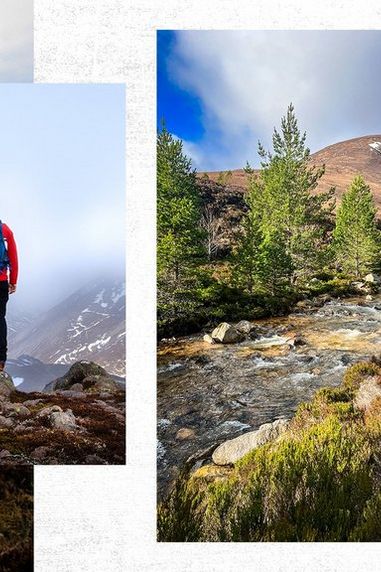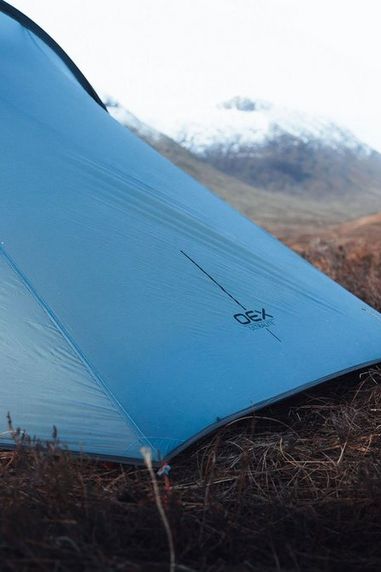Winter may not seem a great time to go running. When the days grow short and the windchill bites, the other side of the window can look like a hostile place.
With the right approach, though, winter running can be a joy. Frosted mornings, empty trails where the warm-blooded fear to tread, breath pluming before your face: it’s a quiet time of hesitation before spring begins its riot. And you can turn it into your training ground.
With that in mind, here are some tips for getting the best out of your cold-weather running. With the right kit and the right mindset you can gain the advantage over the cold-averse competition.


Pre-empt the temp.
Worse than any hill, the first step out into the chill is your real obstacle. Until you get moving the outside temperature can feel unendurable. In those moments it’s tempting to throw on extra layers. It takes mere minutes, however, for the body to generate heat and then you may find that the extra thermal layer or jacket turns you into an overheating mess.
General advice suggests that you should dress as if the temperature is 10°C warmer. Whilst this may mean a few shivery minutes, you’ll soon be grateful not to be overdressed. Plus, it can be a great incentive to get going.

Layers Slay
This brings us to what you should wear. As in so many outdoor pursuits, it’s all about the layering system. On a really cold day 2-3 layers is optimum.
A good, technical baselayer is a must. It will sit next to the skin and insulate. It will also wick sweat away from your body.
Next you want a looser (but not too loose) running t-shirt. The warm air trapped between this and the baselayer will create a warming microclimate. Running tops can be long- or short sleeved depending on preference, but if you go short, make sure to choose a long-sleeve baselayer.
Top this off with a running jacket. The lighter the better for obvious reasons. You want something reassuringly water-resistant and windproof. Breathability is crucial factor here too, as you need to allow your excess water vapour to escape without letting the cold creep in.
Ditch the shorts for running tights. Again, windproofing elevates your comfort levels significantly, and look for mid-weight rather than lightweight tights for the heart of winter.
Lastly, get a good pair of gloves and a hat as you can lose a disproportionate amount of heat through your extremities. We’d also recommend a running pack. It’s a handy place to stash snacks, hydration, handwarmers, and a place to store a layer if you warm up too much.

Feet of Engineering
Shoes are fairly integral to running, you’d agree? When it’s icy underfoot the right footwear can be the different between a triumphant sprint and a dignity-shattering faceplant.
Snow is not your enemy; it compresses underfoot, cushions your foot-strike and makes everything look delightful. You will get wet feet if your shoes can’t withstand it, but waterproof GORE-TEX™ membrane will deal with this easily. In deep snow a pair of short running gaiters will stop excess powder funnelling down into the shoe and turning into a freezing anklet. There are a variety of gaiters that are compatible with different types of footwear.
We’d recommend you avoid icy-pavements full stop as no amount of underfoot traction will be 100% reliable. In order to deal with frozen trails you should opt for a good pair of trail running shoes. Deep lugs will bite into snow and frost just as easily as summer mud. If you hit a piece of ice buried beneath snow they will also give you the best chance of keeping your balance.
For the best possible grip you could invest in a pair of over-the-shoe ice-spikes, such as YakTrax or Kahtoola Nanospikes. These will pierce the frozen ground and give you extra traction.
Remember, winter running is different than its summer equivalent. You may have the occasional slip or tumble. Learn to enjoy the rough-and-ready nature of the experience.


Light ‘em Up
With shrinking days and low light levels, visibility is more essential than ever in winter. Most important is your personal illumination. A brightly coloured hat is always useful as it stands out at eye-level for other trail users. Attach running lights to your front and back and, if possible, choose a flash setting to catch the eye. If you do opt for a running jacket with reflective detailing, make sure that these aren’t covered up by your pack.
A headtorch will take care of both seeing and being seen. The quality varies wildly so do some research before purchase. Petzl are a reliable brand with a wide range of models that balance weight, luminosity and features. A red bulb setting will avoid glare and night-blindness, which comes in useful when consulting a map, phone or your GPS watch.
Just remember that your headtorch obeys the same rules as car headlamps. Make sure it is bright enough to light your way but adjust the settings so as not to blind others.
Don’t forget that there is some daylight in winter though, and running is great way to make the most of it. Getting out in the middle of the day lets you soak up some of that much-needed vitamin D and boost away your winter blues.

Watch Your Water
Sweat isn’t just a summer thing. If you push yourself then, no matter how cold it is outside, you’ll start to perspire. You may not feel as obviously thirsty during a winter run but you will still be losing liquid that needs to be replaced. You should make sure to fully hydrate before a run and fully replenish your water afterwards. If you are feeling too chilly for a cold drink post-run then simply dissolve some rehydration or electrolyte supplement in warmer water.

A Cold Stretch
This is crucial! You should always warm-up properly before running, but in the winter this takes on an particular importance. The cold impedes bloodflow and the delivery of oxygen to your muscles. If you just start smashing out a fast pace you run the risk of strains or worse.
Instead, start your warm up with some gentle dynamic stretching. These increase blood-flow more efficiently than static stretches as they mimic natural movements of the body. Lunges, squats and arm rotations will all get your blood pumping.
Begin with a low-intensity pace for the first few minutes. Adjust the time to the expected length and intensity of your run. When your heart rate is elevated and you’re breathing slightly more heavily you can begin to ramp up the intensity and away you go…
So, don’t waste away the entire winter with box-sets and lie-ins. Get out an enjoy running through the winter before it’s gone. Keep warm, keep safe, have fun.



